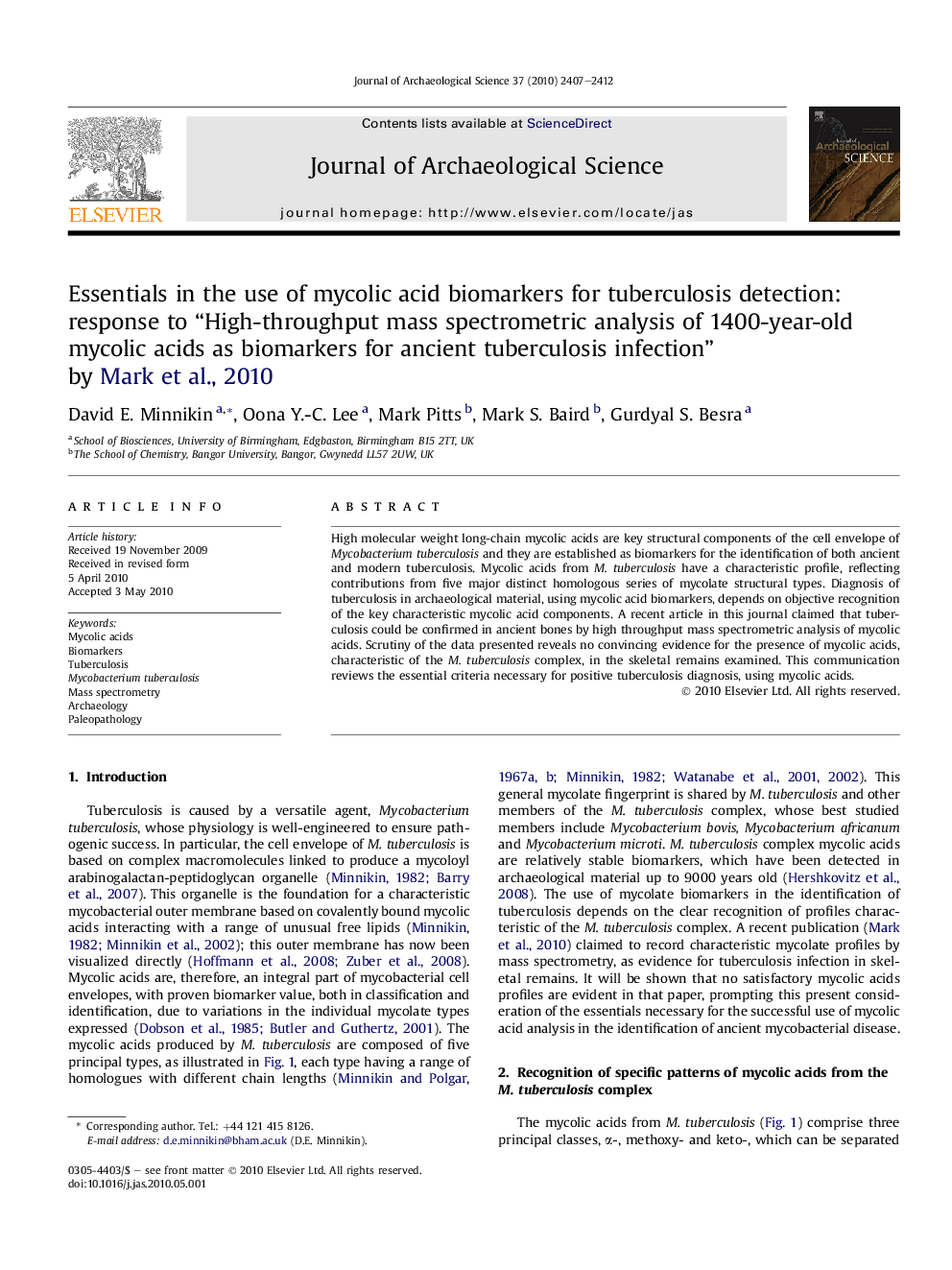| کد مقاله | کد نشریه | سال انتشار | مقاله انگلیسی | نسخه تمام متن |
|---|---|---|---|---|
| 1035941 | 943871 | 2010 | 6 صفحه PDF | دانلود رایگان |

High molecular weight long-chain mycolic acids are key structural components of the cell envelope of Mycobacterium tuberculosis and they are established as biomarkers for the identification of both ancient and modern tuberculosis. Mycolic acids from M. tuberculosis have a characteristic profile, reflecting contributions from five major distinct homologous series of mycolate structural types. Diagnosis of tuberculosis in archaeological material, using mycolic acid biomarkers, depends on objective recognition of the key characteristic mycolic acid components. A recent article in this journal claimed that tuberculosis could be confirmed in ancient bones by high throughput mass spectrometric analysis of mycolic acids. Scrutiny of the data presented reveals no convincing evidence for the presence of mycolic acids, characteristic of the M. tuberculosis complex, in the skeletal remains examined. This communication reviews the essential criteria necessary for positive tuberculosis diagnosis, using mycolic acids.
Journal: Journal of Archaeological Science - Volume 37, Issue 10, October 2010, Pages 2407–2412